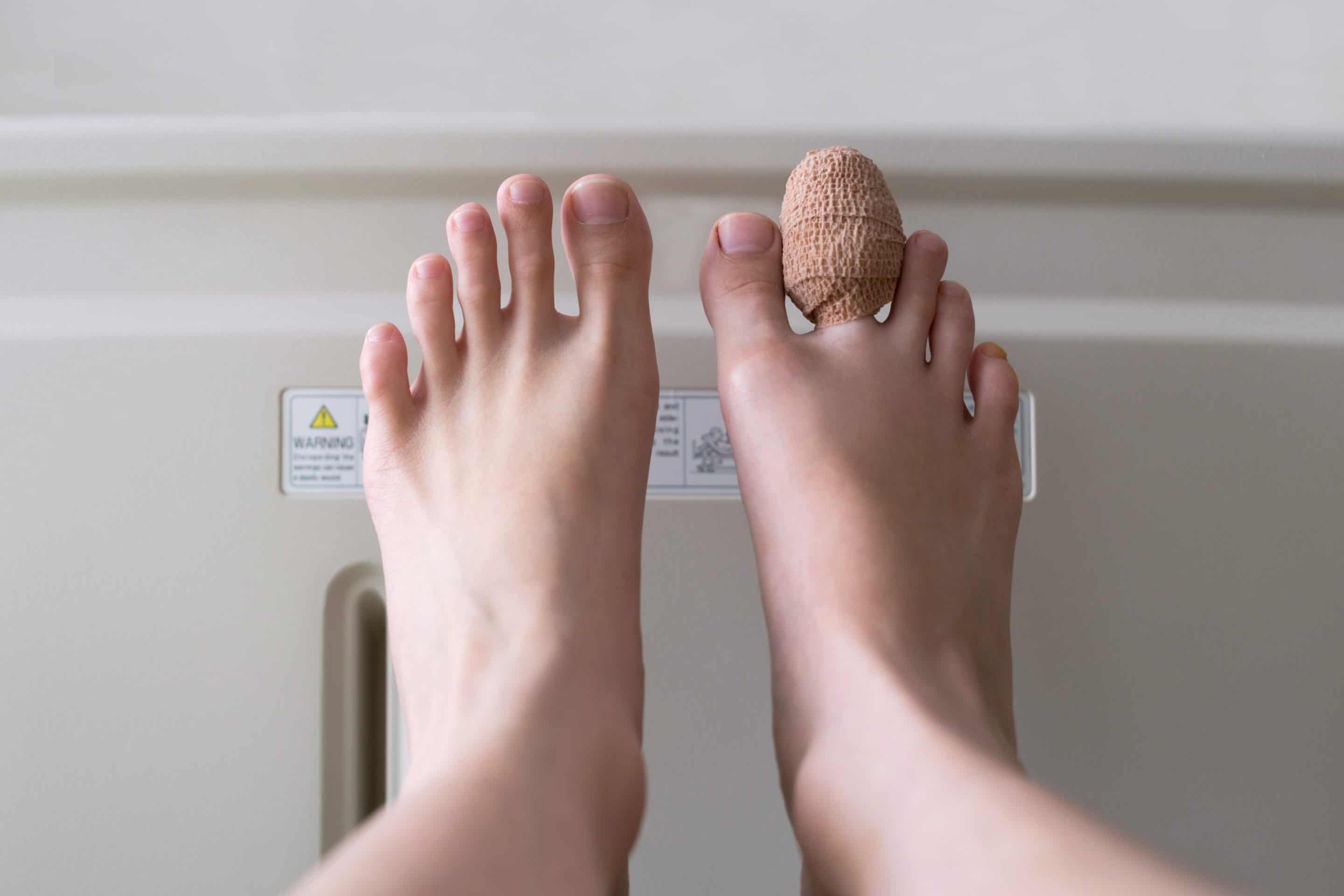Do You Have a Broken Foot or Toe?
If you’re an athlete, the last thing you want to do is sit out your whole season with an injury. That downtime can affect your game, and, frankly, it’s just no fun.
Foot injuries are common for athletes, and often the type of injury they attempt to treat with the “wait and see” method – tape the toes together and wait to see if they improve.
The problem with that is if you have a broken bone, even the smallest fracture can escalate into something that will ruin your season. The result could be infection, a worsening fracture, bones that grow out of alignment, and long-term pain or mobility issues.
Not All Fractures Are the Same
Believe it or not, you may have a foot or toe fracture and still be walking on it. Not all fractures are the same. Fractures in the foot are often mistaken for sprains. Two of the most common causes we see for foot or toe fractures are sports injuries and falls.
Sports Injuries
Athletes are especially likely to suffer stress fractures. This type of fracture is a crack along the surface of the bone. They’re caused by repetitive force and usually affect weight-bearing bones. Repetitive exercise or impacts can break down bone cells. Normally, our bodies can recover and repair the bone during periods of rest. But if the bone doesn’t have enough time to heal between workouts, it will eventually weaken until it finally cracks under the pressure.
Falls
Falls are another common cause of fractures in the feet and toes. Poorly fitting shoes are often the culprit. Tripping, falling, or even just hopping down from a short height can fracture any of the many bones in your feet. Athletes in high-impact sports are especially likely to suffer fractures from falls and impact.
How Do You Know You Have a Fracture?
You may not always recognize that you have a fracture, yet immediate treatment is critical for your best recovery. Waiting can worsen the fracture – keeping you sidelined longer. Symptoms of a fracture include:
- Pain or discomfort when putting weight on the foot
- Swelling, bruising, or a deformed appearance
- Intense, throbbing pain when the injury happened
- Tenderness around the injury
- Pain that gets better at rest and worsens with activity
- Pain and difficulty putting on or removing shoes

How To Treat a Foot or Toe Fracture
If you think you have a foot or toe fracture, don’t leave it to chance. The old theory that toe fractures aren’t treatable has kept too many people from seeking the care they need. Please don’t do that! Every foot injury deserves an evaluation. An untreated fracture can ultimately cause chronic pain or arthritis, even if it seems like a minor inconvenience at the time.
After you’ve injured your foot, some basic first aid can help you manage the pain and swelling until you can get to our office:
- Rest – Keep weight off the injured foot
- Ice – Apply ice to the area for 15-20 minutes at a time. Always wrap the ice pack in a thin towel first to protect your skin.
- Elevate – Whenever possible, elevate your leg above your heart when sitting or lying down to help prevent swelling.
We’ll examine your foot and recommend an X-ray or MRI at our Joliet office to learn more about the injury. Most fractures don’t require surgery, but there are steps we can take to help you protect that foot while you heal. From rest and stretching to more advanced treatments, we’ll get you back on your feet.
Get Back on the Mend with Professional Care
Nobody wants to ride the bench because of a foot injury, but if you’re injured, playing through the pain can have lasting effects on your body – and your game.
If you think you have a fractured foot or toe, don’t wait to get an evaluation. Schedule an appointment at Advanced Foot & Ankle Centers of Illinois today by calling one of our conveniently located offices or requesting an appointment online.
